White spots on the TV screen: why did they appear and what to do?

It happens that on the TV screen you can see some kind of light, which is most visible at the edges of the screen and in the corners. Many users are greatly disturbed by such finds. In today's article, we will talk about where white spots come from on a TV screen and what to do with them.

Reasons for the appearance
Spots on a liquid crystal (LCD) monitor or TV most often appear during the operation of equipment. Not a single screen, even the most expensive company, is immune from such a malfunction. The main reason for the appearance of such errors is considered to be a factory defect.
But the spots are different. It so happens that when watching TV in some parts of the screen (if there is a certain color in some area), you can see barely noticeable white highlights.
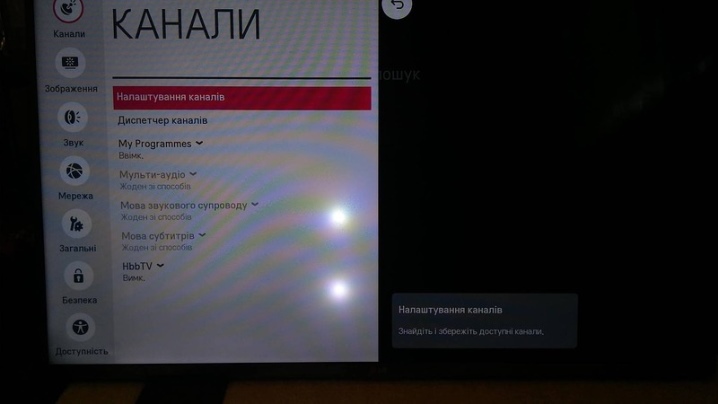
This situation can happen with any LCD, LED or plasma screen. But do not rush to sound the alarm, such an image may be a feature of this model, and not its defect.
In rare cases, such "spots" are a design feature. They can also include thin stripes along the edges of the screens a couple of tones lighter than the rest of the surface. Some people who are not tempted with a good image may not notice such shortcomings for years, and a picky user will immediately discover them. In other cases such spots can appear during use of the TV, and each type of screen may have its own reasons for their appearance.
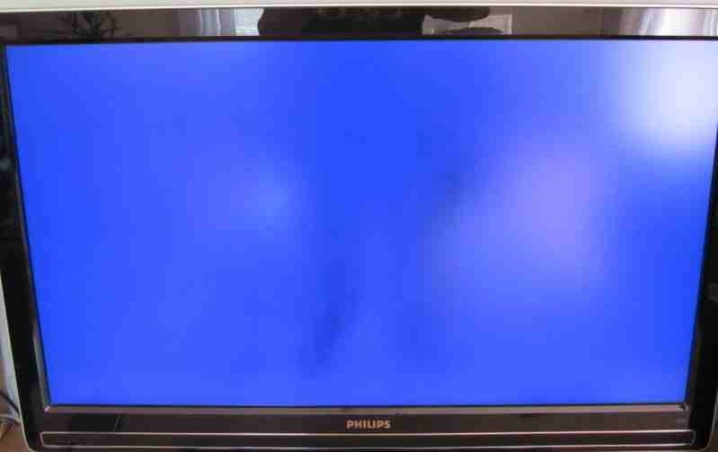
LCD and LED screens
The reason for the appearance of white areas on this type of screen can be:
- incorrect assembly of the device - if the matrix is installed skewed, then such defects may appear;
- physical impact on the surface of the screen (pressing or hitting it).
In any of the described cases, you will have to completely change the matrix.


Plasma
A plasma panel also has such shortcomings, only here the problem lies in the malfunction of the blocks that are responsible for the construction of the picture. In rare cases, this may be a defect in the matrix itself. To fix this problem, you will need to replace the imaging unit.
As soon as you notice problems with the image, and if the warranty period has not yet expired, then it is advisable to immediately send the product to a service center for repair or replacement. It is worth noting that sometimes very small and not very conspicuous spots cannot always be regarded as a warranty case and will be refused repair.
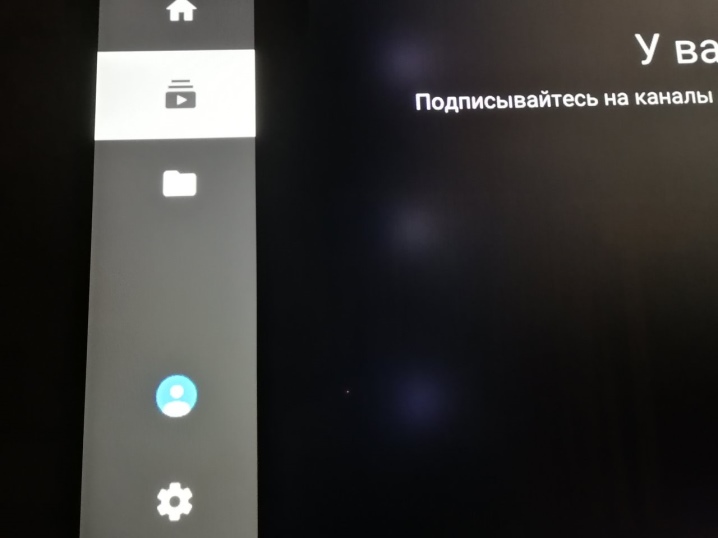
How to get rid of?
Areas of uneven brightness can sometimes be corrected in 2 ways:
- light pressure;
- adjustable brightness and contrast.
Let's take a closer look at each of the methods.


Manual fix
In order to correct this problem manually, we need a soft cloth. Turn off the TV and start gently rubbing the screen from the center to the edges.
Repeat the procedure several times until the area with the defect disappears.
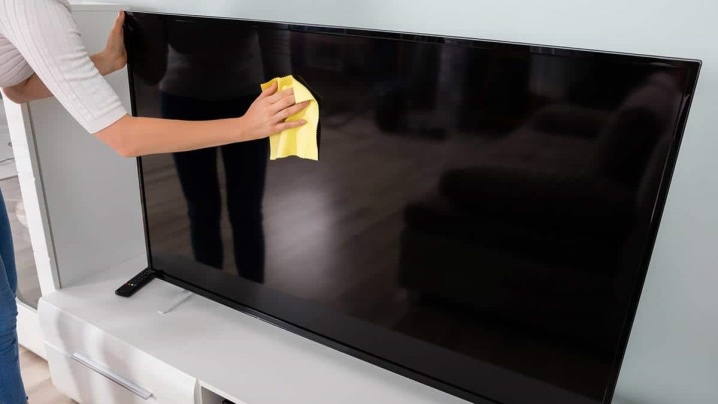
On some models, the rear screws that hold the front bezel together with the back are overtightened at the factory, which causes the screen to warp and light up around the perimeter. To fix this, loosen all screws around the perimeter by about ¼ turn. Thus, remove unnecessary load from the matrix.
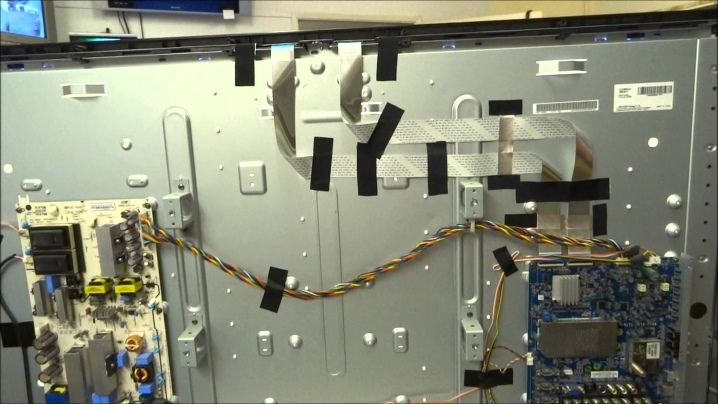
Adjusting brightness in settings
Open the settings menu with the remote control. Now you need to go to the section that is responsible for adjusting the brightness of the image. Next, you need to set the backlight level to the minimum acceptable level.
On some TV models, the backlight can be turned off completely without degrading the picture quality. Turn off any settings that adjust brightness based on the lighting in the room. This will disable the control option, which is necessary to reduce the visibility of errors on the screen during viewing.
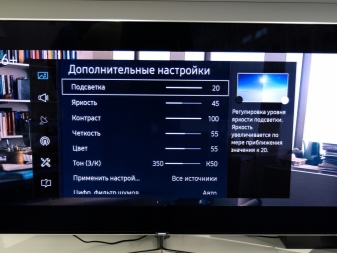
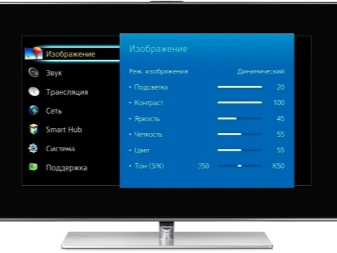
There are times when small dots appear on the screen. Most likely, it is dust trapped between the layers. And such situations arise very often during repairs in a room where the TV is located, or during a move. This is not always a factory defect, since all screens are equipped with a ventilated gap between the layers - it happens that any small debris gets into this distance. In order not to disassemble the screen, users have found several ways out of this situation.
The first method contradicts all the rules for using such devices, however, many use it at home and are satisfied with the result. The essence of this method is to gently knock out a speck of dust from the screen. In order not to damage the device, you need to take something that will damp the force of the impact, and distribute it evenly. A wool scarf or sweater will do. Having wound it around your hand, you need to start applying light blows to the screen near the place where the foreign body is.

This method can be called "barbaric", but it is used and quite successfully.
A more gentle option - extracting a foreign object from the layers of the screen, they also came up with it at home. The object is removed with a vacuum cleaner, only, as with the previous method, the main thing here is not to overdo it and keep the vacuum cleaner hose at a distance.
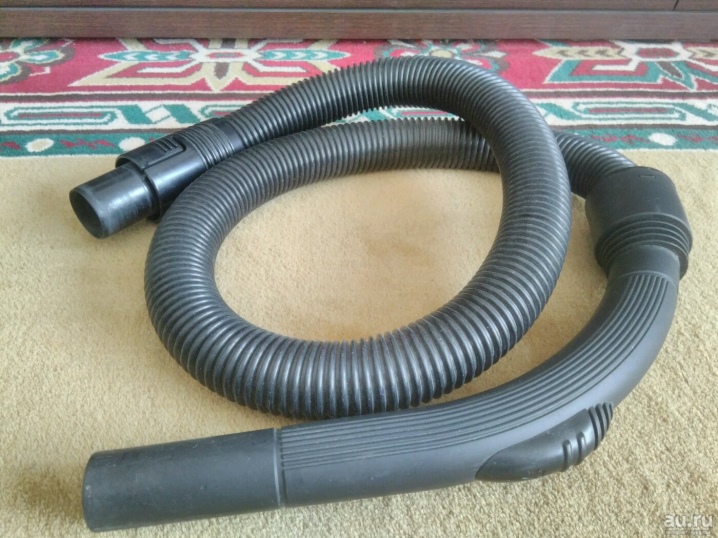
When is a screen replacement necessary?
Most often, replacing the screen is required after serious mechanical damage, when repair is impractical or is much more expensive than a new matrix. This happens in the event of a strong impact on the screen or its fall. Such spots have a clear impact boundary, as well as traces of cracks. Some new screens may show blurry outlines, this is because nearby pixels start to burn out from excess voltage.
About how spots appear on the TV screen, see below.













The comment was sent successfully.